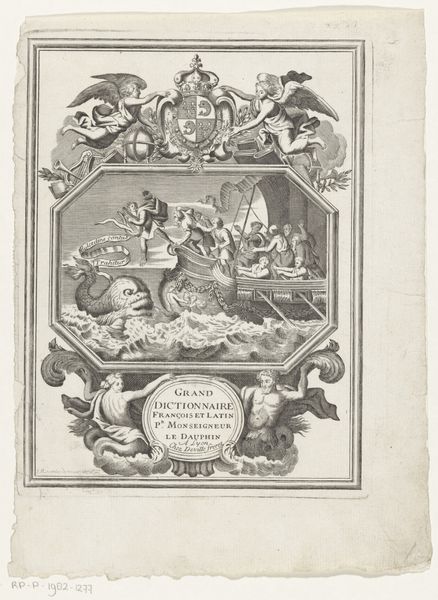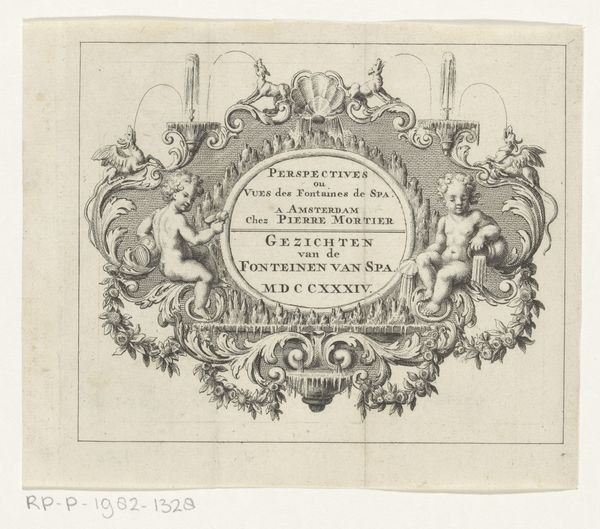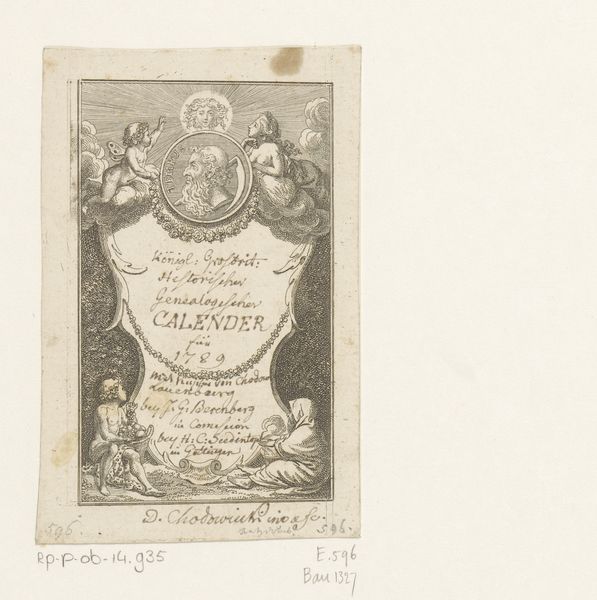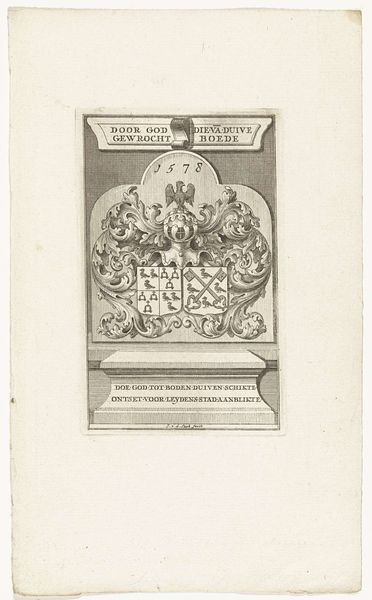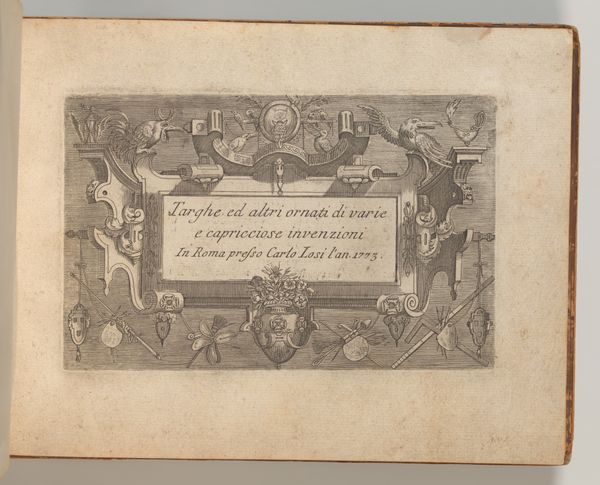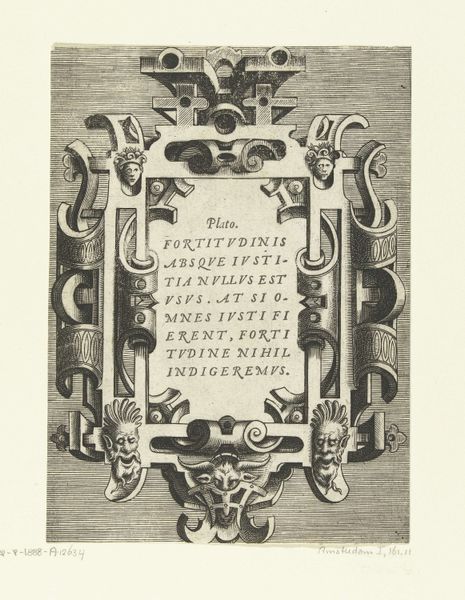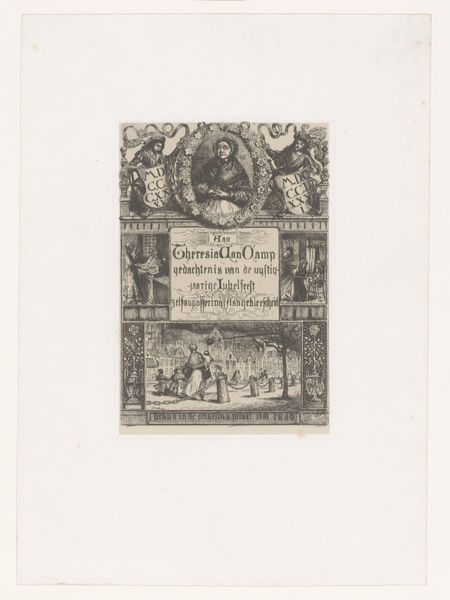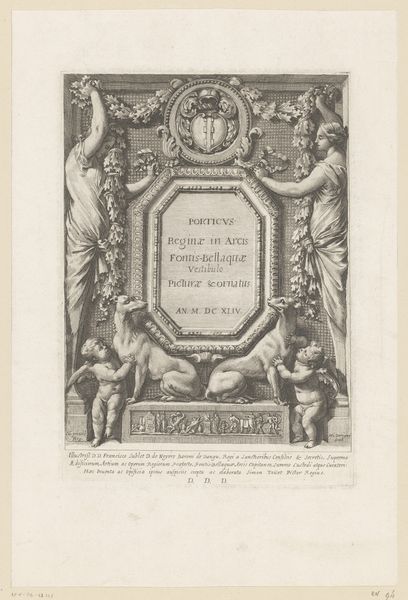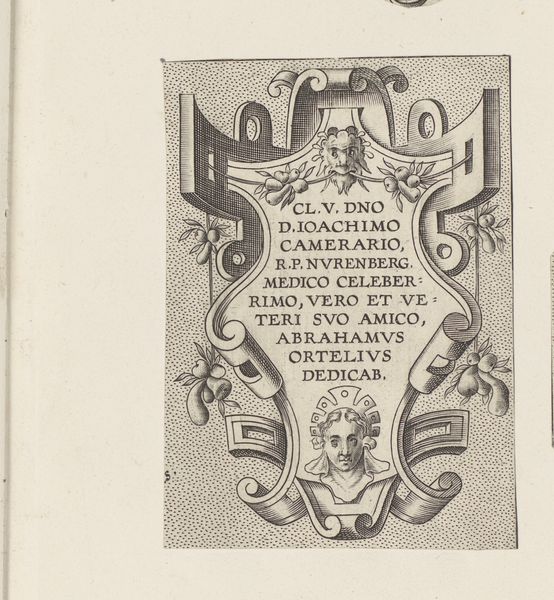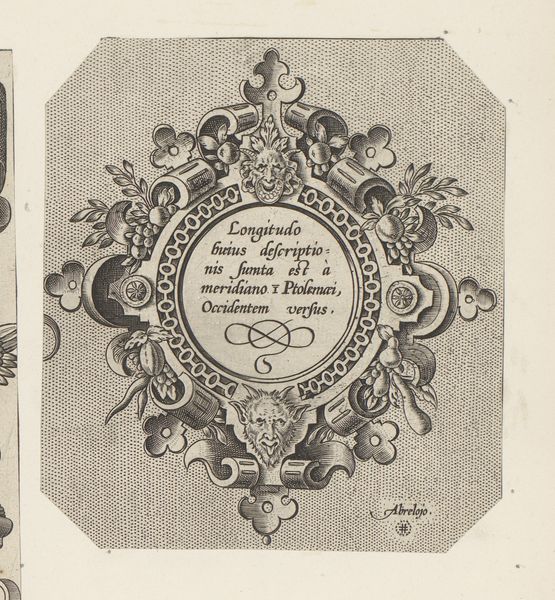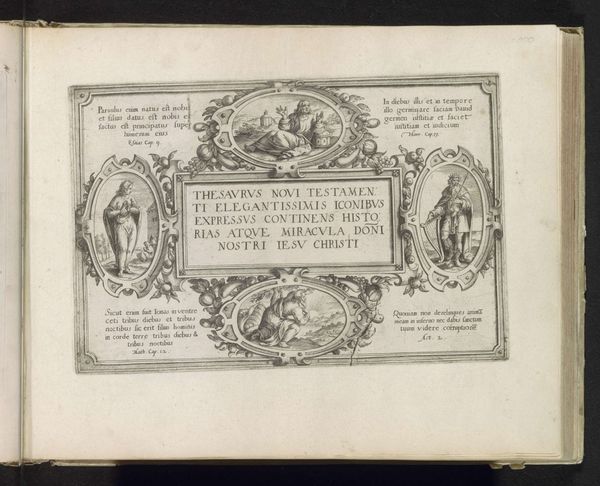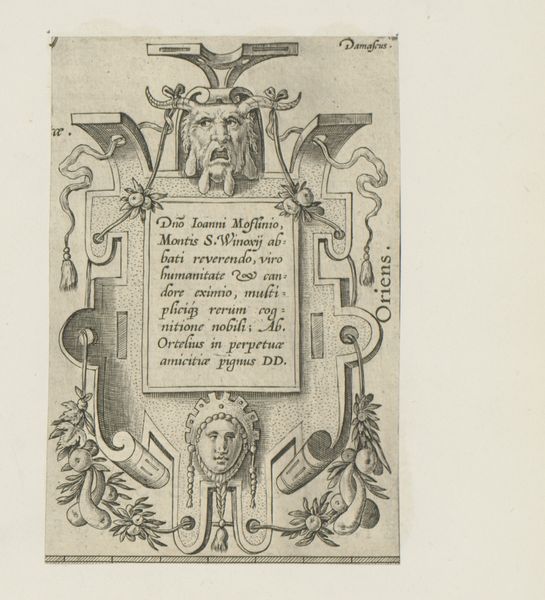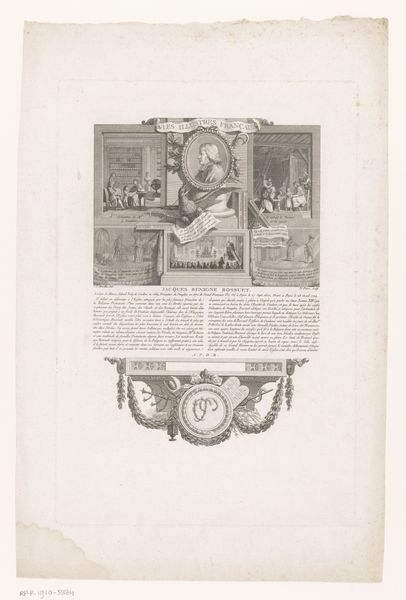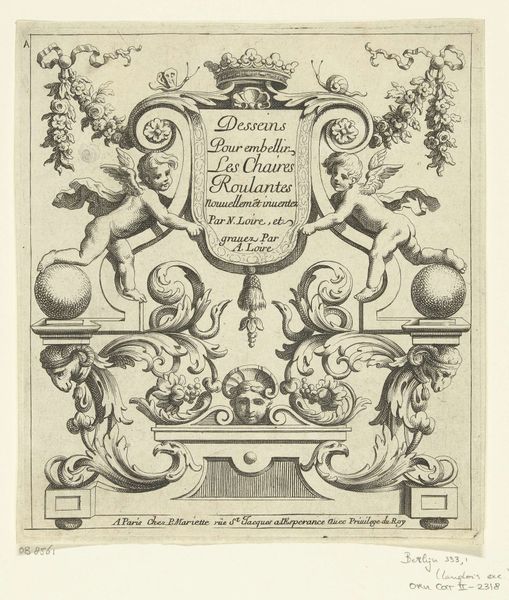
Dimensions: height 134 mm, width 90 mm
Copyright: Rijks Museum: Open Domain
Editor: Here we have Frans Van Kuyck’s print, “Ornament cartouche met putti”, created sometime between 1862 and 1915. The engraving seems to echo the Baroque style with its elaborate frame, complete with cherubic figures. What strikes you most about it? Curator: What immediately grabs my attention is this image’s explicit function. It’s a title page, likely for a collection of plays. Notice the emphasis on the author E.M.M. Rosseel, and the publisher, Edm. Mertens. Considering the era, the image signifies not just artistic skill but the power of print in disseminating culture and ideas. The very act of publishing and owning a collection of dramatic works speaks to social and cultural capital. Editor: So, you're saying it's less about pure artistry and more about the socio-political context of book production and consumption? Curator: Precisely! Think about who would commission such a print. Who was E.M.M. Rosseel and who was the intended audience for these “dramatic works?" Also, how did illustrated title pages contribute to the overall value and desirability of a book in this period? These factors directly shape its artistic relevance. Editor: I hadn't considered the role of the publisher in shaping art styles. It highlights the intersection of art and commerce. Curator: Yes! Understanding that intersection allows us to see art not as existing in a vacuum, but as an active participant in larger historical narratives about power, knowledge, and taste. So what did you make of it, in the end? Editor: I now see it not just as an image but a symbol of how art and publishing were intertwined in shaping cultural values.
Comments
No comments
Be the first to comment and join the conversation on the ultimate creative platform.
